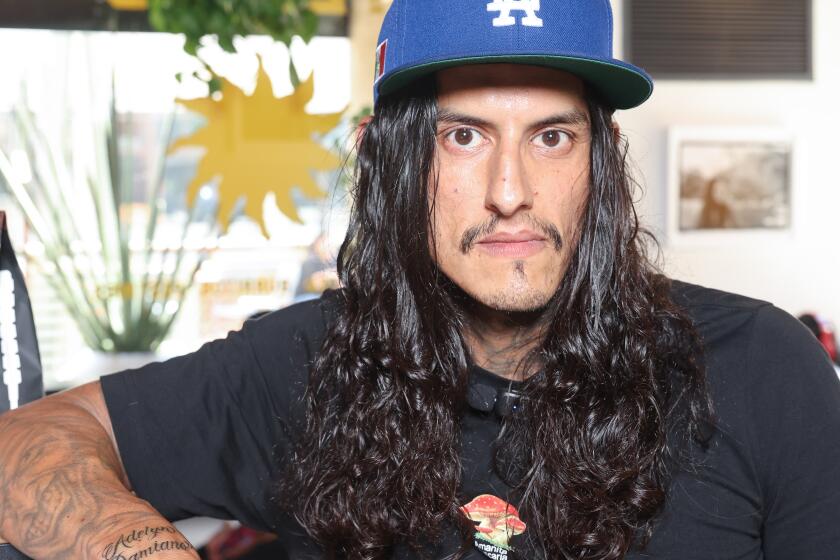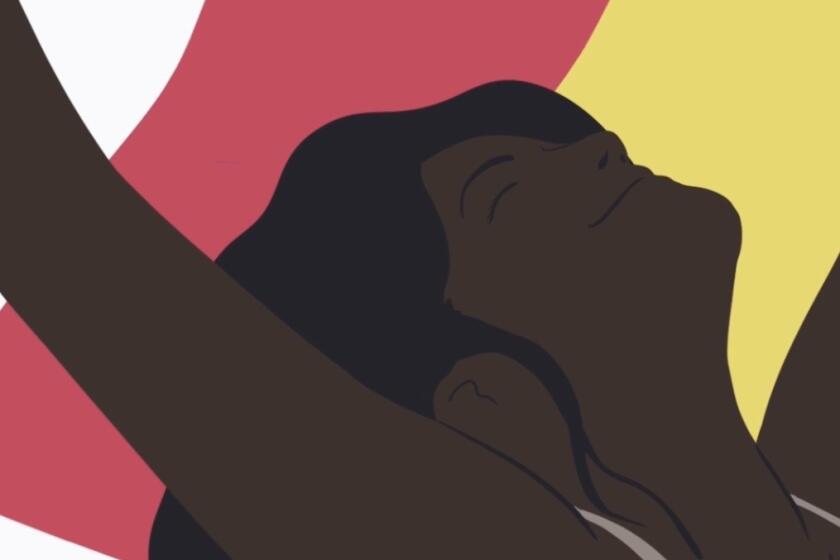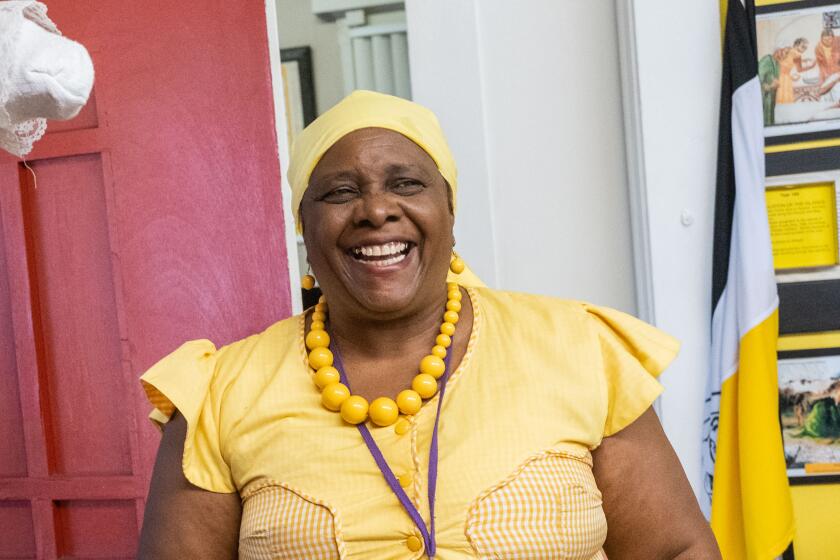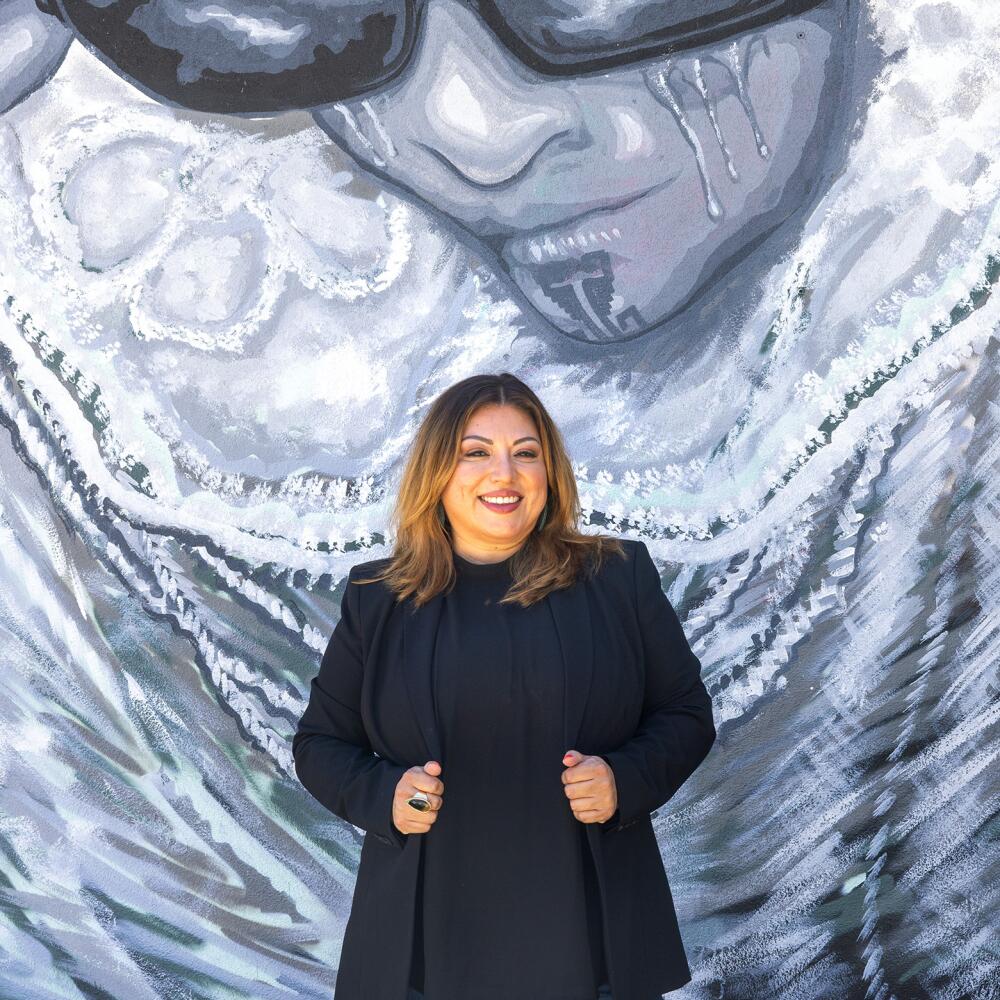
- Share via
Since the 1970s, Self Help Graphics & Art has combined community, collaboration and activism, all centering on Chicanx and Latinx art. What started in the East L.A. garage of Sister Karen Boccalero has turned into a cornerstone art movement in Los Angeles — a place that has nurtured some of the city’s most successful Latinx artists.
As it marks its 50th anniversary next month, Self Help Graphics has chosen Jennifer Cuevas to lead the organization. Cuevas, who served as a communications consultant since 2017, will become executive director Sept. 5. The appointment follows the departure of Betty Avila, who’d held the post since 2018.
Cuevas first learned about Self Help Graphics in the late 1990s. As collectives like Mujeres de Maiz were forming, and music acts like Quetzal and Ozomatli were rising to prominence, Cuevas started thinking about multidisciplinary art and activism. She previously worked with the Vincent Price Art Museum at East Los Angeles College, has held posts as cultural arts producer and is chief executive-founder of Jenerate Media, a small boutique media agency.
A former gang member who left his criminal past behind, Richard Cabral has found success in Hollywood. His next move? A coffee shop in Pasadena.
The hire comes as the center embarks on a $14-million capital campaign to renovate its building on 1st Street in Boyle Heights. The center will remain closed during the two-year renovation, with programming continuing at local venues, including its signature Día de los Muertos event in November, this time at the East L.A. Civic Center.
We spoke with Cuevas about the new role she will play in the legacy and future of Self Help Graphics. The following interview has been edited for clarity and length.
The 50th anniversary of Self Help Graphics is being marked by a number of celebrations and exhibitions this year. What are your thoughts on the next 50 years?
I’m absolutely thinking about the mark that we’ll leave in this generation and how that’s going to impact the future generations of Self Help Graphics... I’m also thinking about the renovation of our building. A few years ago, we were able to purchase the building. We’ve been able to pay off the mortgage, and that was under the leadership of former Executive Director Betty Avila, who I worked with very closely over the last several years. And now that we’re in a moment where our team is working remotely and we are about to embark on this renovation, I am thinking about how we are creating a home that will hopefully live for the next 100 years and more.
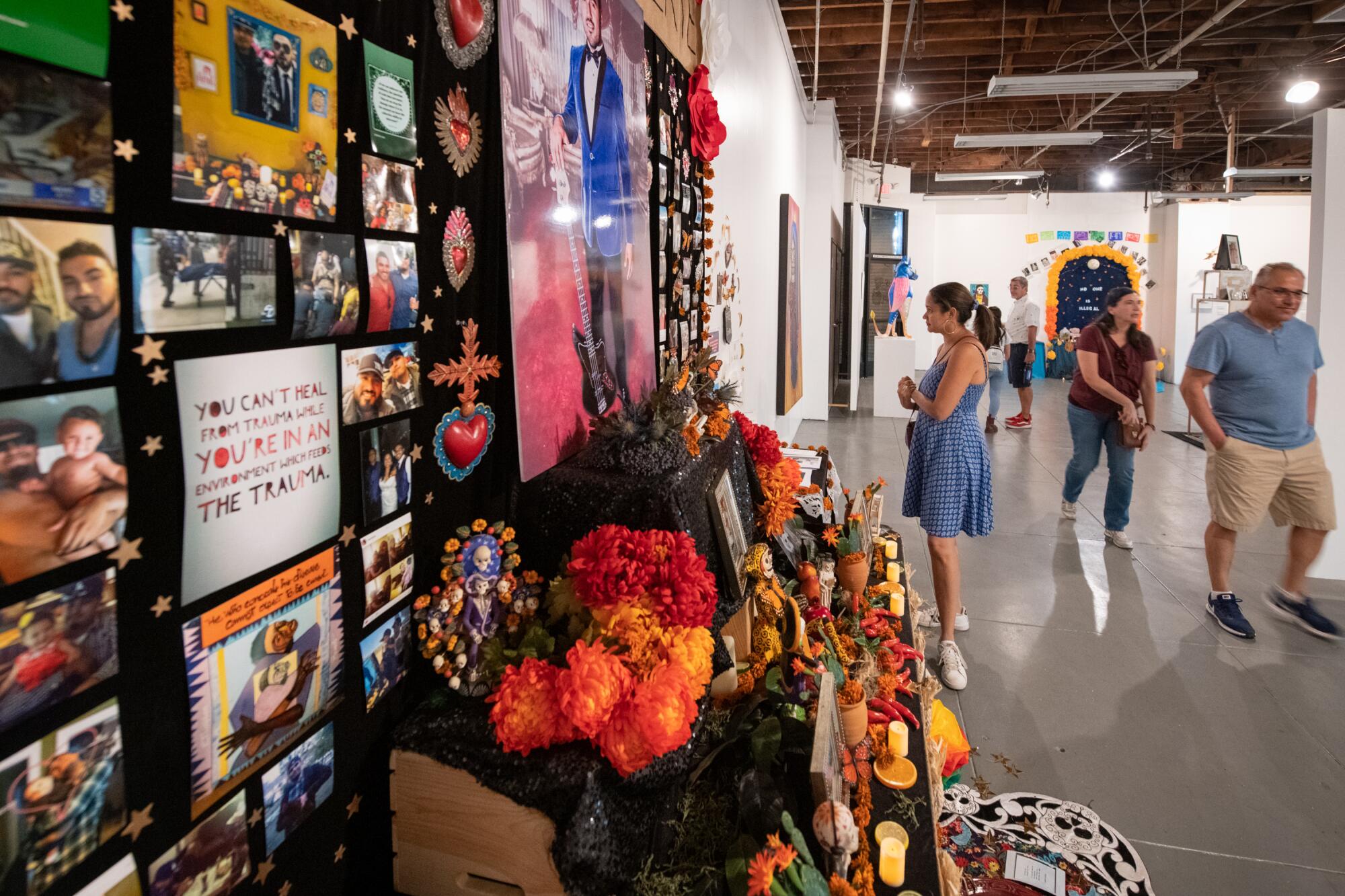
In an interview you did with former Executive Director Betty Avila, you mentioned that there are a lot of intergenerational interactions and information sharing at Self Help Graphics. How have you seen that evolve over the years?
One of the things that makes Self Help Graphic so special is that you have an opportunity for peer-to-peer learning in different stages of your career. You might have more seasoned artists that are training or working alongside young artists. Or you might have opportunities where the youth is teaching some of the older artists about different techniques.
A great example of that [intergenerational experience] is master altar maker Ofelia Esparza. She came as an adult in the early 1980s to Self Help Graphics and participated as an altar maker with Sister Karen. She brought her children and then her grandchildren, and her great-grandchildren. She’s a perfect example of somebody who has continued to foster arts and teaching and learning from the top down and the bottom up.
Los Angeles poet Yesika Salgado curates the first De Los Latino poetry series where poets explore the theme of belonging.
What are some major lessons you’ve taken away from Self Help Graphics over the years?
The organization has experienced tumult over the decades of its existence. As somebody who comes from that communications and storytelling lens, it’s really important to continue to tell our story. It’s important to leave behind and share the programmatic work.
Some years back, when there was some conflating around art washing, some of the things we discovered in our own evaluation and internal reflection as an organization is that we weren’t really sharing how much work we were doing in terms of advocacy, in terms of living those values. We were doing the work behind the scenes, but we weren’t really great about sharing how we’re activating those very important pieces publicly.
If you look at the organization now, we are literally investing in youth, and we are doing a lot of programmatic and engagement work through our youth artivism programs. It was a really important lesson for us to continue to communicate and to continue to stay engaged. It’s not enough to just pop up and do a workshop. We need to connect with our community.
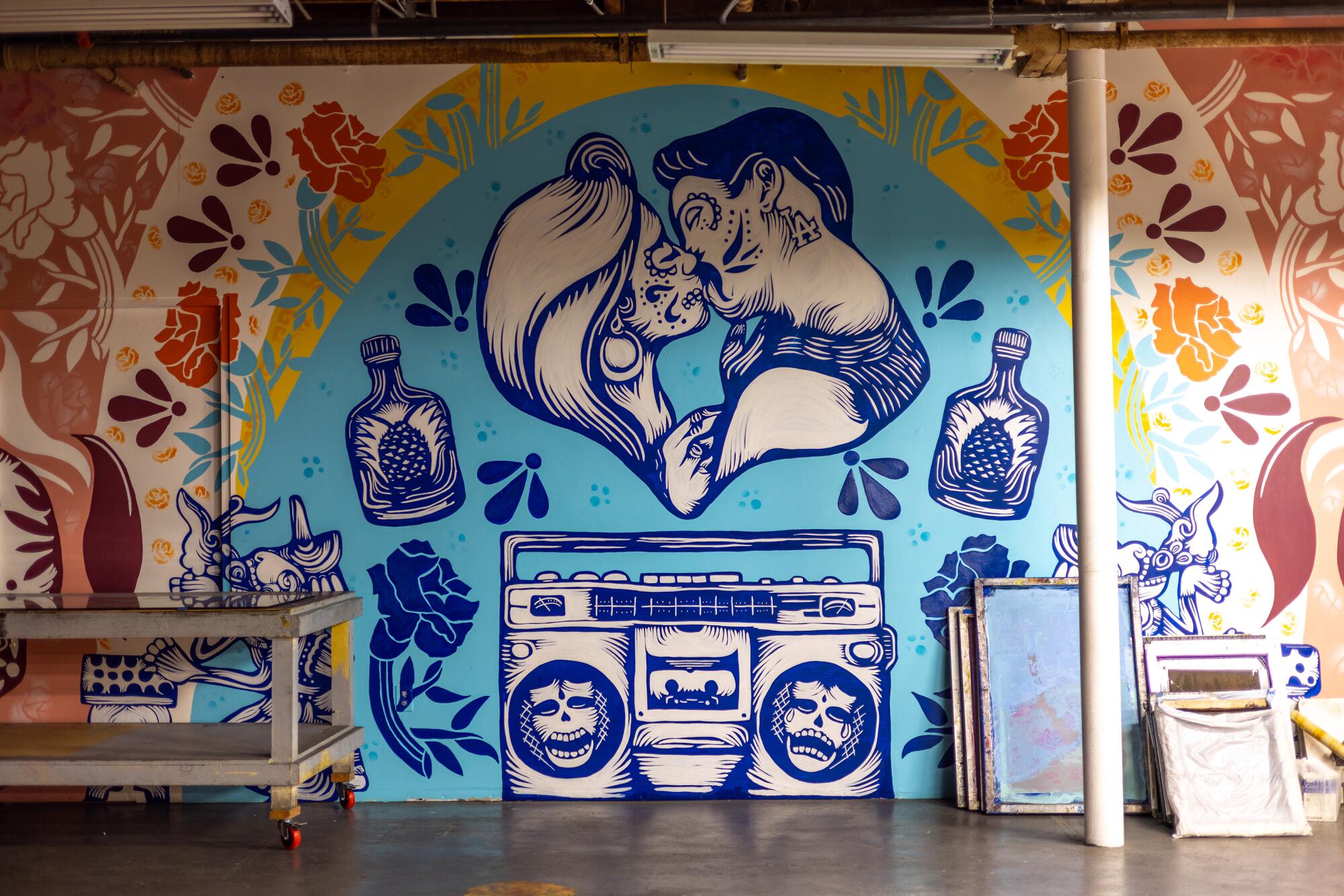
When you’re not busy, how do you nurture your own creativity?
I love to put my hands in dirt. I love landscaping. It’s a skill and something I learned from my maternal grandfather, Domingo. He really taught me that no matter what’s going on, no matter what life is throwing at you, you can just get into the garden and just let it go... The other thing is I love music. It was one of my first loves in the arts. I worked the first decade in my career in the music industry. I represented artists who were from all over the world… I’ve always got to have a little music in the background to keep me focused.
Latinidad is an ever-expanding concept, but it has not often made space for the Garifuna people who come from various regions of Central America.
What are your hopes for the next generation of creative Latinx folks who might be thinking, “I want to be able to contribute to the cultural landscape of L.A.”?
One of the things I’m learning from this next generation, particularly Gen Z, is that they don’t shrink themselves. They come into a space, they take up space, and they’re fully authentic… I would say to the next generation: Continue to take up space, continue to be authentic, have your cultural pride, speak your languages and keep your Indigenous names. Just stay rooted in who you are, and don’t let people shrink you.
My generation comes from a different workforce, where you had to be a little bit more streamlined or you had to work until you were completely exhausted. We’re coming into an age where health and wellness is absolutely vital to not just your personal space but also to your workspace… I definitely believe that this next generation is going to save us in a lot of ways. And I’m continuing to learn and stay open and coachable myself.
Recinos is an arts and culture journalist and creative nonfiction writer based in Los Angeles. She is the creator of Notes From Eva, a free monthly newsletter for creatives.
More to Read
The Latinx experience chronicled
Get the Latinx Files newsletter for stories that capture the multitudes within our communities.
You may occasionally receive promotional content from the Los Angeles Times.

